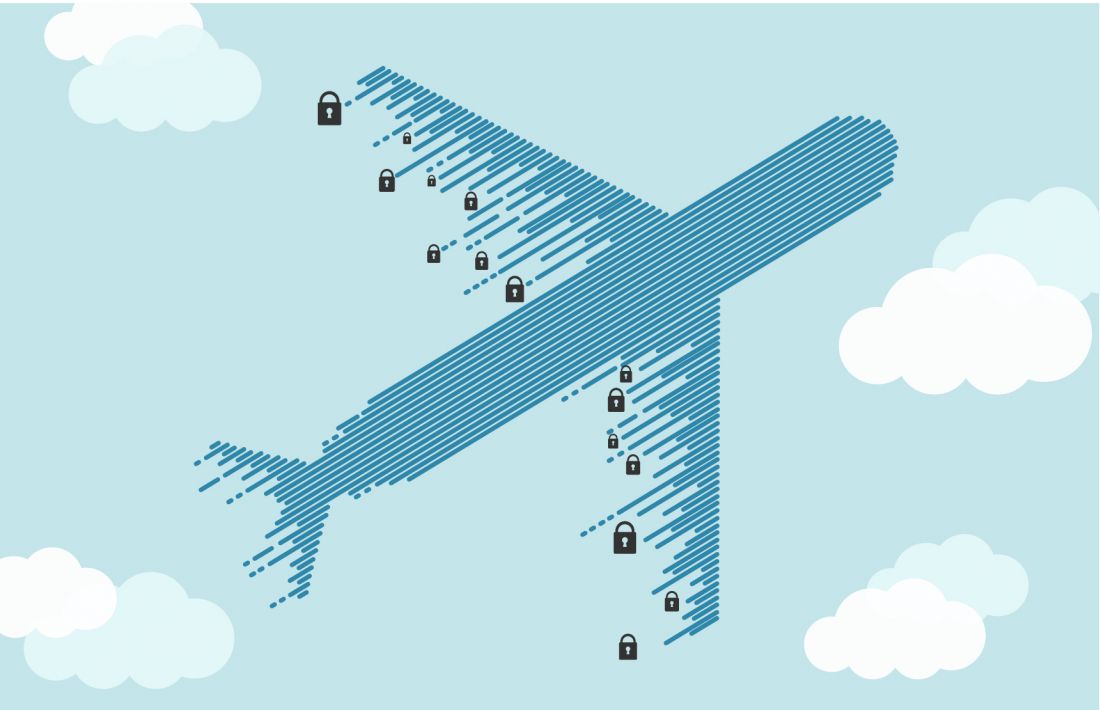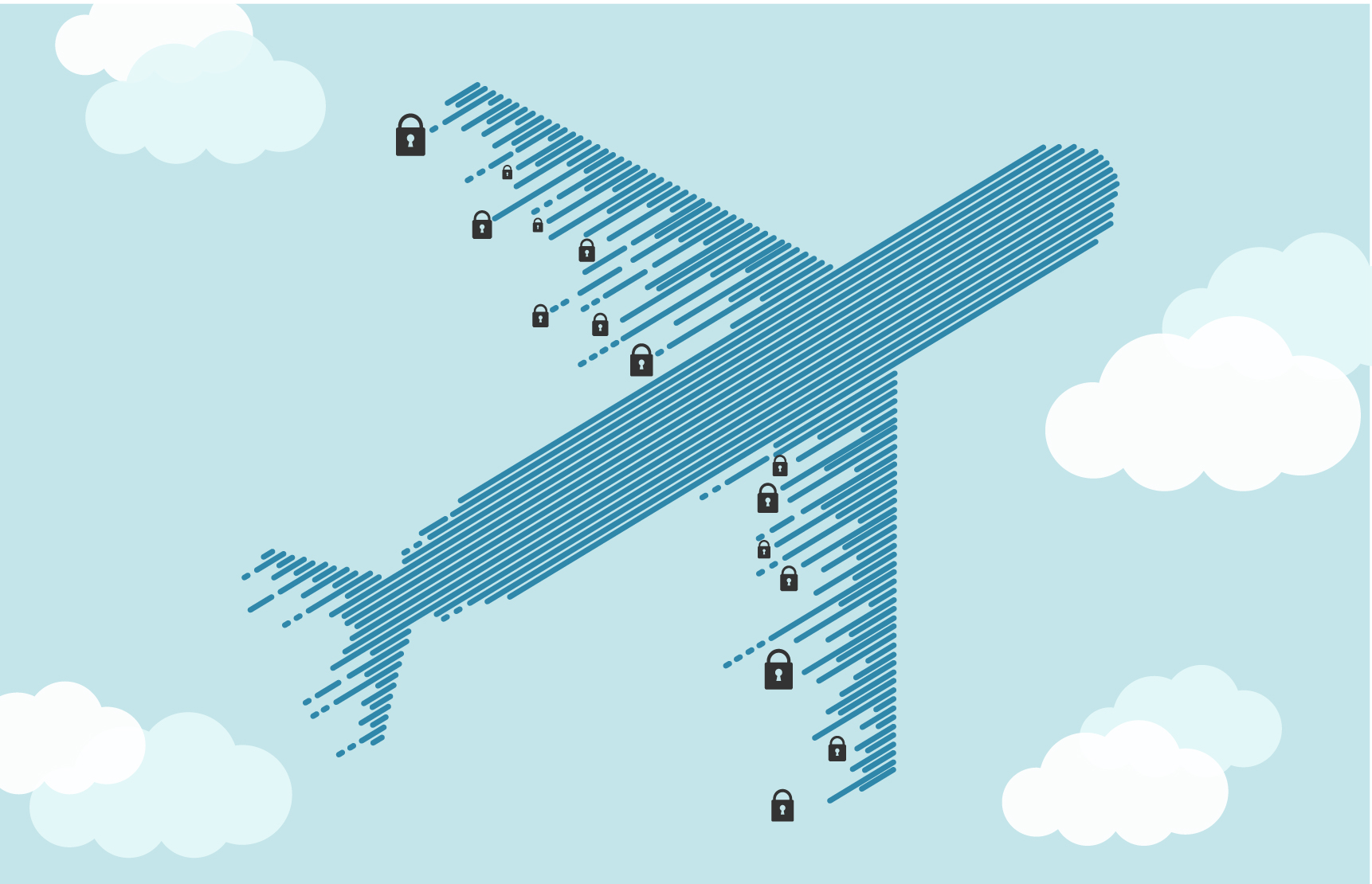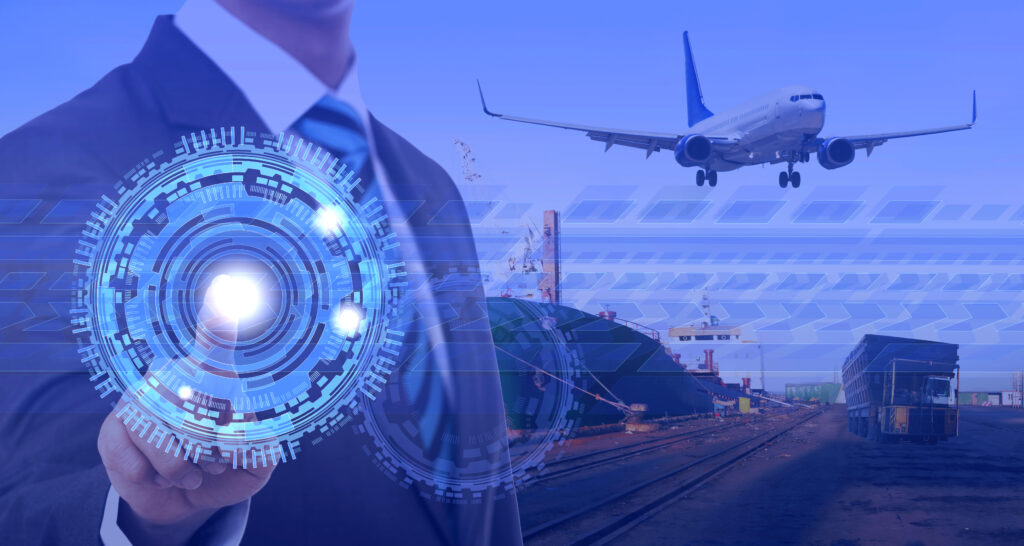Aviation cyber security protects aircraft, airports, and aviation systems from cyber threats. It ensures safety and reliability in air travel.
Aviation faces increasing cyber threats as technology advances. Cyber attacks can disrupt flight operations, compromise passenger data, and affect aircraft safety. The aviation industry employs robust cyber security measures to counter these threats. These measures include advanced encryption, real-time monitoring, and stringent access controls.
Airlines and airports collaborate closely with cyber security experts and government agencies to safeguard their systems. Training and awareness programs for staff are also crucial. Continuous assessment and updating of security protocols help combat emerging threats. Effective aviation cyber security ensures safe and secure air travel for passengers worldwide.
The Sky’s New Threat: Cyber Attacks
Cyber attacks now target the aviation industry. This new threat causes concern for airlines and passengers. Cyber criminals aim to exploit vulnerabilities in aviation systems.
Rising Cyber Threats To Aviation
Airlines face increasing cyber threats every day. Attackers target flight operations, passenger data, and communication systems. These attacks disrupt services and compromise safety.
| Threat | Description |
|---|---|
| Phishing | Fake emails trick employees into revealing information. |
| Ransomware | Malicious software locks systems until a ransom is paid. |
| Data Breaches | Unauthorized access to sensitive passenger information. |
Consequences Of Compromised Security
Compromised security in aviation leads to severe consequences. Attackers can cause flight delays and cancellations. They can also steal passenger data and harm the airline’s reputation.
- Flight disruptions
- Data theft
- Financial losses
- Reputational damage
Ensuring cyber security in aviation is crucial. Airlines must protect their systems from these threats. They need to invest in advanced security measures.
Flight Systems On The Frontline
Aviation cyber security is a critical concern in today’s digital age. Flight systems are at the heart of aviation safety. They control everything from navigation to communication. Cyber threats to these systems can have serious consequences. Protecting these systems is essential for passenger safety.
Vulnerabilities In Aircraft Systems
Modern aircraft rely heavily on complex software. This software controls many crucial functions. Hackers can exploit vulnerabilities in these systems. This can lead to data breaches or even loss of control over the aircraft.
There are several common vulnerabilities:
- Outdated software: Older systems may lack recent security updates.
- Weak encryption: Poor encryption can make data easier to intercept.
- Insufficient access controls: Unauthorized access can compromise flight safety.
- Inadequate network security: Weak network defenses can expose aircraft to cyber attacks.
Regular audits and updates can help mitigate these risks. Ensuring strong encryption and access controls is crucial. Implementing robust network security measures is also necessary.
Navigating Through Digital Turbulence
Aviation cyber security requires constant vigilance. Airlines must stay ahead of potential threats. This includes regular training for staff and frequent system updates. Collaboration with cybersecurity experts is also vital.
Here are some strategies to navigate through digital turbulence:
- Conduct regular security assessments: Identify and address vulnerabilities promptly.
- Implement multi-layered security: Use multiple defense mechanisms to protect systems.
- Train personnel regularly: Ensure staff are aware of potential threats and how to respond.
- Collaborate with experts: Work with cybersecurity professionals to stay updated on best practices.
Proactive measures can help mitigate risks. Airlines must invest in the latest technology. Staying informed about new threats is also important.
Air Traffic Control: A Cyber Battleground
Air traffic control (ATC) systems are the backbone of modern aviation. These systems ensure safe and efficient flight operations. But, they face increasing threats from cyber attacks. ATC systems are a crucial point for cyber security measures. Protecting these systems is vital to prevent disruptions and maintain safety.
Securing The Invisible Highways
ATC systems manage the invisible highways in the sky. These systems guide thousands of aircraft daily. Ensuring their security is paramount. Cyber attacks can lead to catastrophic consequences. Effective cyber security measures protect ATC systems from these threats.
Implementing strong encryption protocols is essential. These protocols protect communication between aircraft and ground stations. Regular security audits and updates help identify vulnerabilities. Training personnel in cyber security best practices is also crucial.
Challenges In Protecting Air Traffic Infrastructure
Protecting air traffic infrastructure presents unique challenges. ATC systems are complex and interconnected. They rely on various technologies and networks. This complexity increases the attack surface for cyber threats.
- Legacy systems are still in use. These systems often lack modern security features.
- Interoperability issues arise due to different systems working together.
- Insider threats pose significant risks. Malicious insiders can exploit vulnerabilities.
- Advanced persistent threats (APTs) target ATC systems. These threats are difficult to detect and mitigate.
Collaboration between governments, agencies, and private sectors is essential. Sharing threat intelligence helps improve security measures. Developing and implementing international standards is also crucial.

Credit: datascience.aero
Airport Security Beyond The Physical Realm
Airport security has always focused on physical threats. Today, digital threats are just as significant. With advanced technology, airports must secure digital systems too.
Cyber Threats Within Airport Operations
Airports rely heavily on digital systems. These systems handle ticketing, security checks, and baggage handling. Cyber threats can disrupt these operations. Hackers may steal passenger data or cause system failures.
Possible cyber threats include:
- Malware attacks
- Phishing scams
- Ransomware
- Denial of Service (DoS) attacks
Malware can infect airport systems, causing severe damage. Phishing scams trick employees into revealing sensitive information. Ransomware locks systems and demands payment. DoS attacks overwhelm systems, causing delays.
Implementing Robust Digital Defenses
Airports need strong defenses to prevent cyber attacks. These defenses protect systems and keep operations running smoothly.
Key strategies include:
- Regular software updates: Keep systems updated to fix vulnerabilities.
- Employee training: Teach staff to recognize and avoid cyber threats.
- Firewalls and antivirus: Use these tools to block and detect threats.
- Data encryption: Protect sensitive information with encryption.
- Incident response plans: Prepare for potential attacks with a clear plan.
Regular software updates ensure systems have the latest security patches. Employee training helps staff avoid phishing scams and other threats. Firewalls and antivirus software block and detect malicious activities. Data encryption keeps passenger information safe. Incident response plans help airports react quickly to attacks.
| Strategy | Purpose |
|---|---|
| Regular software updates | Fix vulnerabilities |
| Employee training | Avoid cyber threats |
| Firewalls and antivirus | Block and detect threats |
| Data encryption | Protect sensitive information |
| Incident response plans | React quickly to attacks |
By implementing these strategies, airports can secure their operations. This ensures passengers and staff remain safe from cyber threats.
Passenger Data And Privacy At Altitude
In the digital age, passenger data and privacy are paramount. Airlines collect vast amounts of personal information. Ensuring this data’s security at 30,000 feet is critical. Cyber threats target this sensitive data. Safeguarding passenger privacy is a top priority.
Risks To Personal Information
Passengers share personal details while booking flights. These details include names, passport numbers, and payment information. This data is valuable to cybercriminals. Data breaches can lead to identity theft and financial loss.
The following are common threats to passenger data:
- Phishing attacks: Fake emails to steal login credentials.
- Malware: Harmful software that can access personal information.
- Unsecured Wi-Fi: Hackers intercept data on public networks.
Safeguarding Customer Data
Airlines must implement robust cybersecurity measures. Protecting passenger data starts with strong encryption. This ensures that data remains unreadable to unauthorized users.
Key strategies for safeguarding data include:
- Encryption: Securing data during transmission and storage.
- Two-factor authentication: Adding an extra layer of security for user accounts.
- Regular security audits: Identifying and fixing vulnerabilities.
Employee training is also crucial. Staff must recognize phishing attempts and other cyber threats. Airlines should also use secure Wi-Fi networks on flights. These networks protect data from being intercepted by hackers.
Here is a table summarizing the key points:
| Risk | Solution |
|---|---|
| Phishing attacks | Employee training and awareness |
| Malware | Regular security updates and antivirus software |
| Unsecured Wi-Fi | Use of secure networks |
By following these strategies, airlines can enhance cybersecurity. Protecting passenger data ensures safe and secure flights. Passenger trust is built on data security.
Industry Collaboration For Cyber Resilience
In the ever-evolving world of aviation, cyber security is a top priority. Industry collaboration plays a crucial role in building a resilient cyber defense. By working together, the aviation industry can better mitigate threats and ensure passenger safety.
Partnerships In Cyber Defense
Strong partnerships are essential for effective cyber defense in aviation. Airlines, airports, and technology providers must collaborate. This cooperation allows for the sharing of resources and expertise.
Public and private sectors also need to join forces. Governments can provide regulations and guidelines. Private companies can offer innovative solutions. Together, they create a robust defense system.
Organizations like the Aviation Information Sharing and Analysis Center (A-ISAC) facilitate these partnerships. They bring together industry leaders to discuss and develop strategies.
Sharing Intelligence And Best Practices
Sharing intelligence is vital for staying ahead of cyber threats. Aviation companies must exchange information about potential risks and incidents. This helps everyone prepare and respond more effectively.
Best practices in cyber security should also be shared widely. This includes implementing advanced security measures and conducting regular training. By learning from each other, the industry can improve its overall security posture.
Below is a table summarizing key aspects of intelligence sharing:
| Key Aspect | Description |
|---|---|
| Threat Intelligence | Sharing information about potential threats and vulnerabilities. |
| Incident Reports | Documenting and sharing details of cyber incidents. |
| Best Practices | Exchanging effective strategies and techniques for cyber defense. |
Regular meetings and workshops can also help in knowledge sharing. These events provide a platform for discussing new threats and solutions.
The aviation industry must remain united in its efforts. Collaboration and communication are key to achieving cyber resilience.
Regulatory Frameworks Taking Flight
The aviation industry faces increasing cyber threats. Regulatory frameworks are evolving to counter these challenges. Governments and organizations are actively shaping these frameworks.
Government Role In Aviation Cyber Security
Governments play a crucial role in aviation cyber security. They set standards and regulations to ensure safety. They also enforce compliance through various agencies.
Key responsibilities include:
- Establishing cyber security policies
- Monitoring compliance with these policies
- Providing guidelines for risk management
For instance, the Federal Aviation Administration (FAA) in the USA oversees cyber security measures. European Union Aviation Safety Agency (EASA) plays a similar role in Europe.
Evolving Policies And Compliance
Aviation cyber security policies are constantly evolving. This ensures they keep up with new threats. Organizations must stay updated with these changes.
Recent policy updates include:
- Enhanced data protection measures
- Mandatory cyber security training for staff
- Regular security audits
Compliance with these policies is crucial. Non-compliance can lead to penalties and reputational damage.
Aviation companies must invest in advanced security systems. They should also conduct frequent assessments to identify vulnerabilities.
| Policy | Description | Compliance Requirement |
|---|---|---|
| Data Protection | Safeguard passenger and flight data | Regular audits and encryption |
| Staff Training | Cyber security awareness for employees | Annual training sessions |
| Security Audits | Review of systems and protocols | Bi-annual assessments |

Credit: datascience.aero
Preparing For The Future Of Aviation Cyber Security
The aviation industry faces constant cyber threats. Preparing for the future of aviation cyber security is essential. New technologies emerge daily. A robust strategy is needed to protect sensitive data. This includes training staff and adopting cutting-edge technologies.
Innovations In Cyber Security Technology
Innovations in cyber security technology offer new solutions. These technologies ensure data safety. Artificial Intelligence (AI) helps detect threats early. It analyzes vast amounts of data quickly. Machine Learning (ML) improves threat detection over time. It learns from past incidents.
Blockchain technology secures transactions and data sharing. It creates a tamper-proof record. Biometric authentication adds another layer of security. Fingerprints and facial recognition are hard to fake. Quantum encryption offers future-proof protection. It uses quantum mechanics to secure data.
Here is a comparison of various technologies:
| Technology | Benefit |
|---|---|
| Artificial Intelligence (AI) | Quick threat detection |
| Machine Learning (ML) | Improves over time |
| Blockchain | Tamper-proof records |
| Biometric Authentication | Hard to fake |
| Quantum Encryption | Future-proof security |
Training For A Cyber-aware Aviation Workforce
Training for a cyber-aware aviation workforce is crucial. Employees must recognize threats. They should know how to respond. Regular training sessions help. Interactive modules make learning engaging. Real-world scenarios improve understanding.
A well-informed workforce reduces risks. They can spot phishing emails. They understand the importance of strong passwords. They follow best practices for data handling.
- Regular training sessions
- Interactive learning modules
- Real-world scenarios
- Emphasis on strong passwords
- Importance of data handling best practices
Continuous education keeps employees updated. Cyber threats evolve constantly. Regular updates ensure they remain vigilant. A culture of cyber awareness is fostered.

Credit: m.youtube.com
Frequently Asked Questions
What Is Cyber Security In Aviation Sector?
Cyber security in aviation protects systems, networks, and data from cyber threats. It ensures safe and reliable operations. This involves safeguarding aircraft, airports, and communication networks from hacking, data breaches, and cyber-attacks. Effective cyber security measures are crucial for maintaining passenger safety and operational efficiency in the aviation sector.
What Are The Risks Of Aviation Cybersecurity?
Aviation cybersecurity risks include data breaches, system hacks, and unauthorized access. These can lead to flight disruptions, safety hazards, and financial losses. Ensuring robust security measures is vital to protect against cyber threats.
What Is The Aviation Cyber Security Regulation?
Aviation cyber security regulation ensures the protection of critical aviation systems from cyber threats. It mandates standards and protocols to safeguard data, operations, and passenger safety. Compliance is crucial for airlines, airports, and related entities.
What Is The Cybersecurity Framework For Aviation?
The cybersecurity framework for aviation ensures the protection of aviation systems. It includes risk management, threat detection, and response strategies. This framework adheres to global standards and regulations to maintain safety and security in the aviation industry. It is essential for safeguarding against cyber threats.
Conclusion
Aviation cyber security is crucial for protecting flight operations and passenger data. Implementing strong security measures ensures safer skies. Stay updated with the latest threats and solutions. Continuous vigilance and proactive strategies are essential. By prioritizing cyber security, the aviation industry can safeguard its future and maintain trust.

